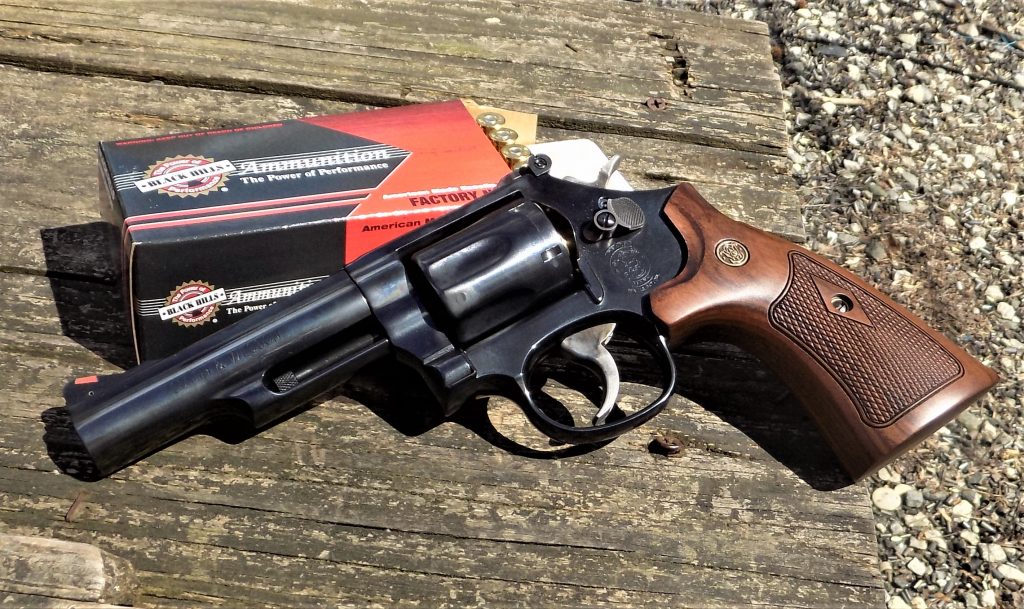
By R.K. Campbell | Contributing Editor
When I first became a peace officer the gun to have was the Smith and Wesson Model 19 Combat Magnum.
Some very good officers carried the standard Military and Police .38 Special, some carried the target grade Combat Masterpiece, and a very few carried a Colt Official Police. The Combat Magnum featured the same reliable double action as the Model Ten Military and Police but added superb high visibility adjustable rear sights, a ramp front sight, a heavy underlug barrel, and hand filling grips.
While the .38 Special was not a great fighting caliber, the Magnum removed any thought of ineffectiveness. The Magnum gave officers a handgun with excellent penetration against light cover and vehicles and the ability to stop a felon with a single well placed shot. The Combat Magnum was the last great revolver in police work as it was replaced by self-loading handguns beginning in the early 1980s.
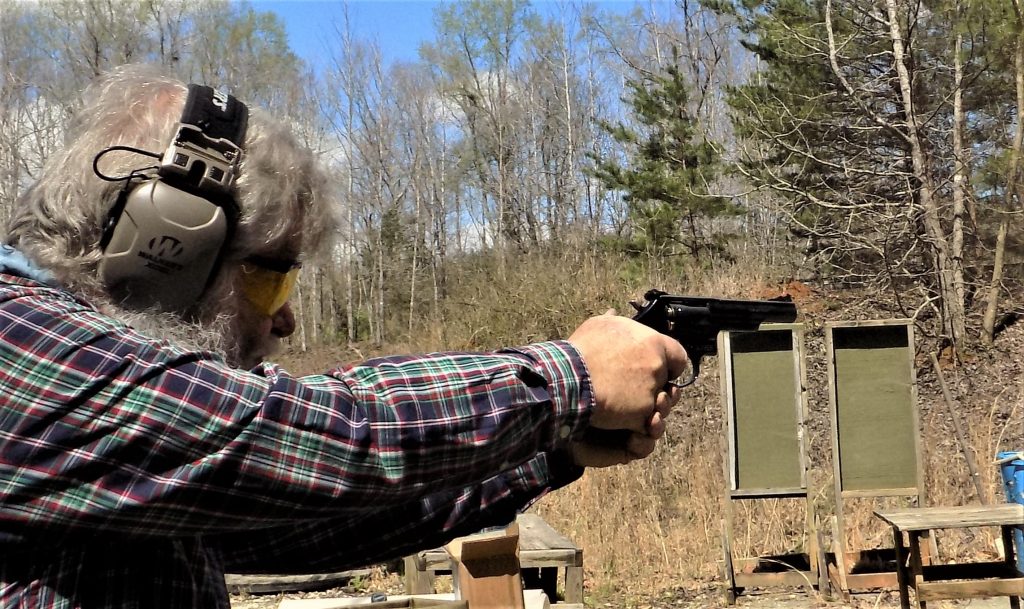
The Model 19 Combat Magnum was introduced in the mid-1950s at the urging of long serving Border Patrolman and combat veteran Bill Jordan. The Combat Magnum was light enough, fast handling, and in fact a peace officers dream. The recipe for success was to fire twenty .38 Special cartridges for every Magnum.
The Model 19 may not hold up as well in long term use as the large N frame .357 Magnum but it was good enough for several generations of peace officers. The Model 19 eventually went out of production, replaced by the beefier L-frame revolvers. Recently Smith and Wesson reintroduced the K-frame Magnum. The result is a desirable handgun with good features but one that differs considerably from the original. The 4.25-inch barrel, blue steel finish and walnut grips add up to a nice revolver. Smith and Wesson calls the new gun a Classic, denoting its role in the Classic line of revolvers.
The last Combat Magnum left the assembly line in 1999. The new revolver is a different animal, with some things about it that are very good and others than we may question. The lockwork, hammer, and trigger are metal injection molding or MIM material. The MIM may not be truly case hardened but it has the look and finish. MIM parts generally have held up well in long term use. Hand fitting is less and with modern CNC machinery tolerances are good. The firing pin is now frame mounted. This type of firing pin is better suited to handling Magnum pressure.
The revolver isn’t a transfer bar system although it looks like one at first glance. The action is shorter than the older revolvers and quite crisp. A shooter with practice and training under their hat will be able to fire these guns more accurately than an original Model 19. That isn’t a tall tale at all but one that has been proven in extensive shooting. As delivered the trigger action was harder than I like. I backed off the screw that holds tension on the mainspring. The action improved considerably and reliable ignition was maintained.
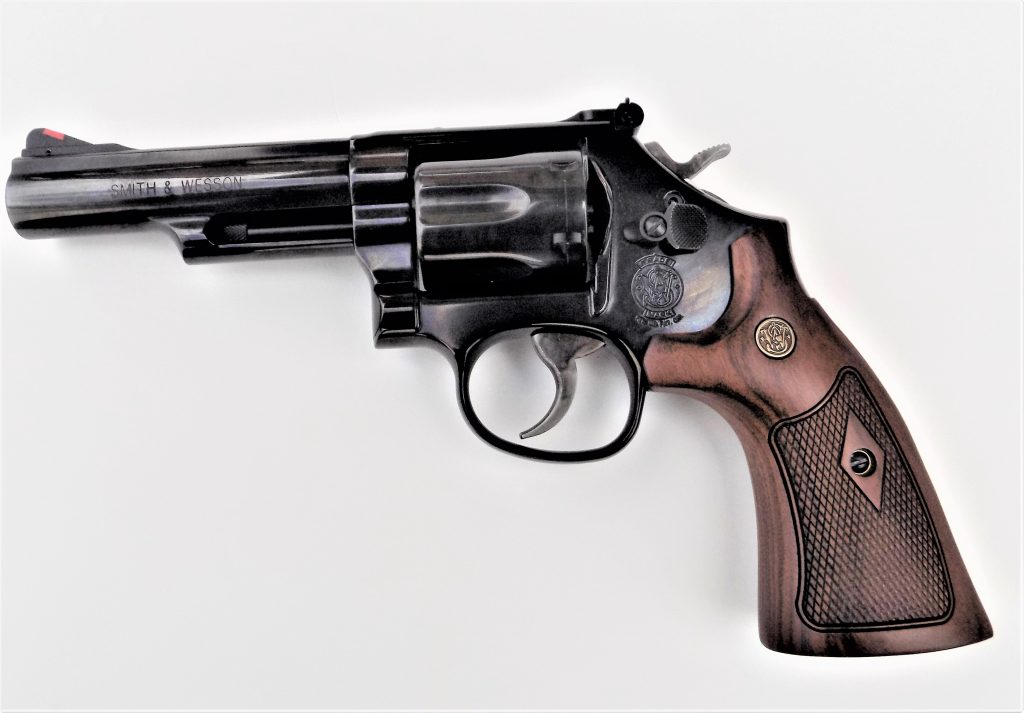
The heavy barrel is actually a shroud covering the barrel, while the ejector rod no longer locks at the barrel shroud but locks into an indent on the frame. This ball detent makes for good rigidity when the revolver is locked up and ready to fire.
The action is smooth and short, crisp in single action fire, and consistent. The trigger features a polished face and beveled edges. This is the type of trigger we once paid a gunsmith to smooth and contour for optimal trigger operation. The double action trigger ran 10.5 pounds on the Lyman digital trigger gauge while the single action trigger was just under 4.0 pounds. That is a good, smooth trigger that aids in accuracy potential. The original Smith and Wesson Magna type grips were too large at the bottom and were contra indicated for rapid fire work. A lot of folks replaced these handsome grips with Hogue or Pachmayr rubber grips. Some of us used Ahrends grips. The new walnut grips are thinner in the right spot and are an improvement over the earlier types.
A note on the grip frame- all modern Smith and Wesson K and L frame revolvers are round butt revolvers. They may be supplied from the factory with a ‘conversion grip’ that appears to be square butt. The actual frame is a round butt and will accept round butt grips. This may be an advantage if the revolver is worn under a covering garment. For field use the supplied grips are fine. I have added a set of Smith and Wesson rubber grips to the kit for concealed carry. The work well in this role.
For some years I have used Black Hills Ammunition 158-grain Cowboy loads for practice. These are mild lead bullet loads, both affordable and accurate. I began firing at man sized targets at 7, 10, and 15 yards. The double action trigger and good sights combined to provide good practical accuracy. The rear sight notch is a little tight for rapid acquisition, but this aided in accuracy testing done at the same time. The revolver centered hits in the X ring. Moving to Magnum loads recoil increased but the jolt wasn’t painful. I used both the Black Hills Ammunition 125-grain JHP and the 158-grain JHP. Get a good sight picture, press the trigger, control recoil and allow the trigger to return during recoil.
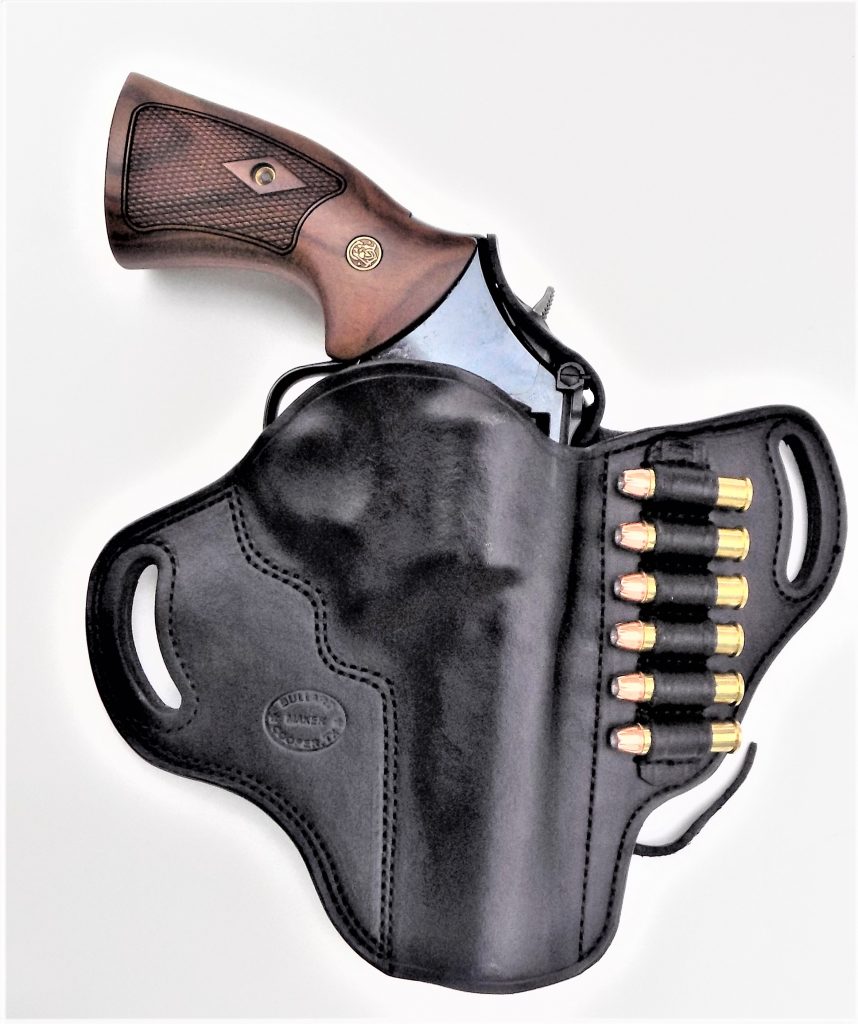
I found the Combat Magnum provides excellent practical accuracy. I often deploy the 125-grain JHP as a defense load. At well over 1400 fps this is a potent combination. The 158-grain 1,300 fps load is well suited to outdoors use and animal defense, even taking deer sized game at moderate range. Each gave good results in fast double action fire. I engaged in a number of fast speed loads. I used the compact and affordable Quickload option. (quickloadspeedloader.com) This is a compact loader that works well after a bit of practice. The loader is affordable and there no knob to run, simply press the gun load into the cylinder. The Combat Magnum passes the test for personal defense use. The philosophy of one shot one hit applies and the shooter must practice getting on target and getting a center hit. The Magnum will do the business if properly applied.
A revolver isn’t worthwhile if it isnt accurate with handloads. I used two hard cast bullets in this experiment, with the ammunition put up in .38 Special cases. I have used Titegroup and H110 for many good loads and the .38 Special is an excellent handloader’s cartridge. Matts Bullets offers interesting designs for the handloader. Among these is a pointed 125 grain bullet and a heavyweight 178 grain Keith style bullet. These bullets, at velocities of 850 to 1100 fps, offered excellent accuracy. Modern CNC machinery makes for tightly matched cylinder throats and barrel leads. The barrel cylinder gap is minimal. Smith and Wesson has a winner in this revolver and a worthy successor to the original Combat Magnum- even if it really isnt the same gun. As for absolute accuracy several of the Magnum loads exhibited groups of 1.4 to 1.6 inches for five shots at 25 yards. This is good enough to ride with.
Honey Badger doesn’t care—
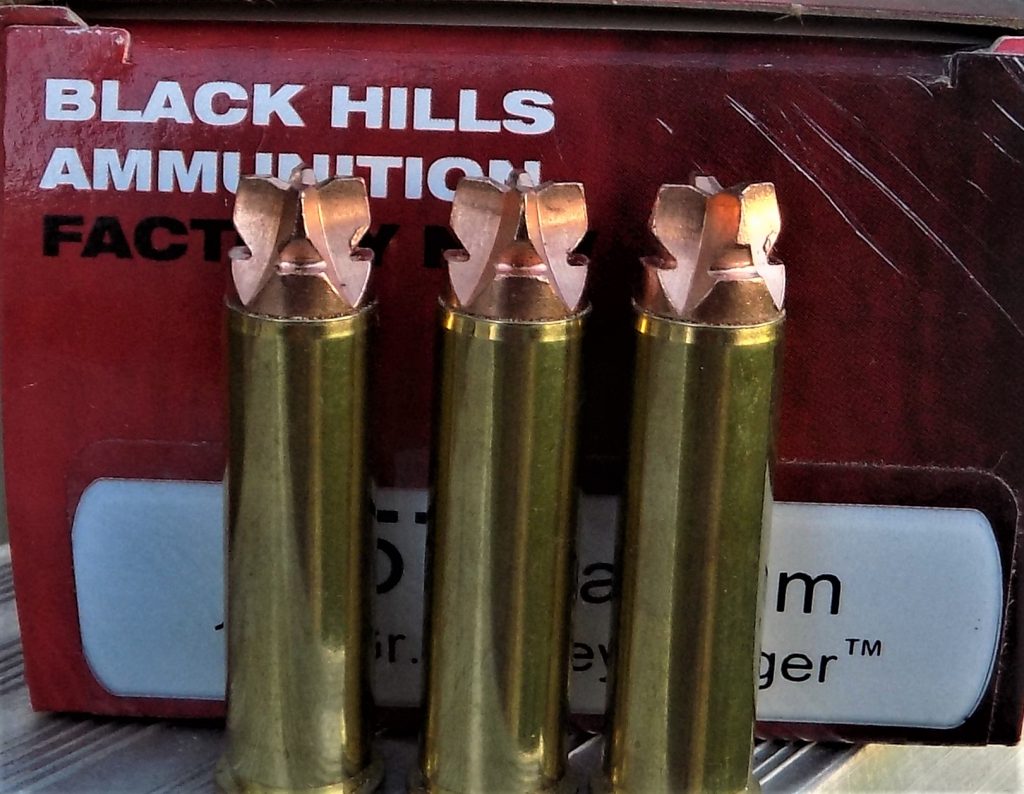
At the tail end of the test period I was able to obtain a supply of the new Black Hills Ammunition 127 grain .357 Magnum. (Black-Hills.com) This is a solid copper bullet featuring a nose with sharp cutting flutes. Tissue is cut and excises rather than being pushed aside. The load doesn’t have to expand; damage is done immediately. The bullet creates a storm by use of fluid dynamic. Gelatin results are impressive. Velocity is an impressive 1373 fps. The .357 Magnum is our most impressive man stopper and these loads offer another option.
Packing the Combat Magnum under a light jacket called for a pancake style holster riding high and close to the body. I selected a holster from (Bullardleather.com) Bullard Leather. While I often carry a speedloader it is good to have a quality holster or belt with belt loops for convenience. The DM Bullard holster offers six belt loops. I like this holster for concealed carry under a covering garment and field use as well.



